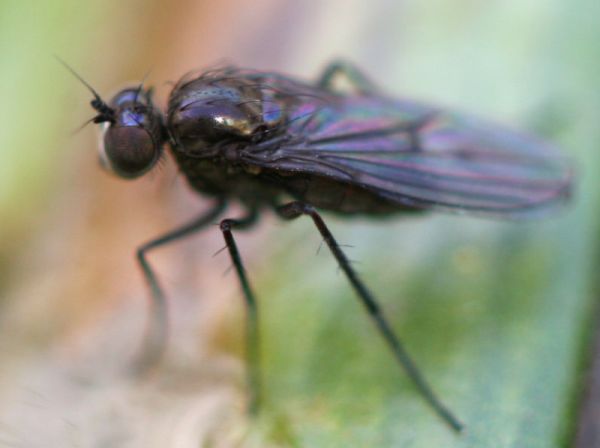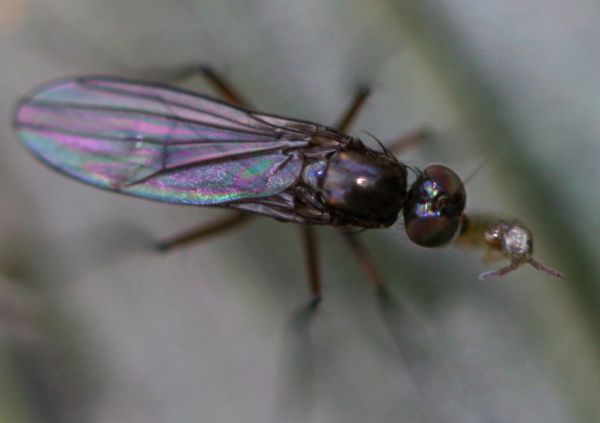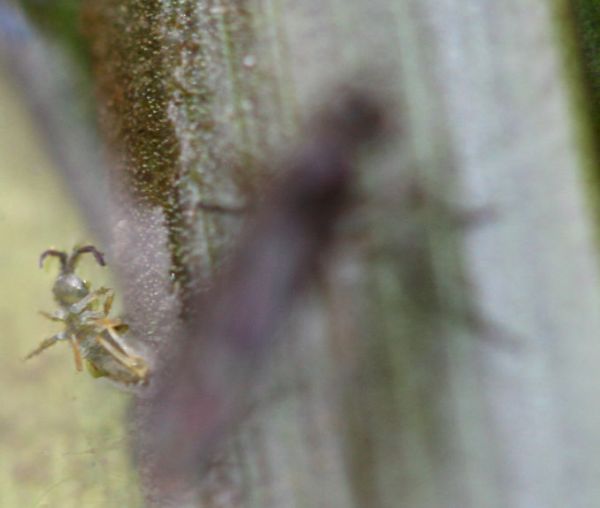Thread subject: Diptera.info :: Dolichopus(?)'s lunch
Posted by Nikita Vikhrev on 25-09-2005 15:41
#1
During this summer I collected images of varios Collembola hunters.
I had Dolichopus simplex, acari (Bdellidae), Microvelia reticulata.
Yesterday I added one more hunter. As far as I understand it is also Dolichopus but another sp.
Collembola is from Isotomidae, vary possible Isotomurus palustris.
All over took about 15 min. As Paul discribed this process, after lunch you can see empty but intact skin of poor Collembola.



Posted by Kahis on 26-09-2005 21:28
#2
A dolichopodid for sure. It looks very much like a female
Campsicnemus scambus, a very common doli especially during the colder months.
Very nice observations on the feeding habits. So little is known about how these flies live & love:(
Posted by Nikita Vikhrev on 26-09-2005 21:37
#3
Thank you Kahis.
Excuse me, why Campsicnemus instead of Dolichopus?
Posted by Kahis on 27-09-2005 09:05
#4
There are numerous characters separating
C. scambus from all
Dolichopus species. In this case at least the following are visible:
Acrostichal setae in one line (two lines in D.)
Metallic blue frons (rare in D.)
Face very narrow below antennae (poorly visible in pic)
Legs with only sparse, short setae (D. has strong setae on hind basitarsus)
Fore femur reddish, dark near base (rare in D.)
Posted by Paul Beuk on 27-09-2005 10:19
#5
When I saw the image, I thought about
Campsicnemus but could not recall having ever seen specimens with such dark legs.
Posted by Nikita Vikhrev on 27-09-2005 13:05
#6
Kahis and Paul, thank you very much. I'll compare D. & C. images and try to find this differences.
Posted by Kahis on 27-09-2005 15:01
#7
When I saw the image, I thought about Campsicnemus but could not recall having ever seen specimens with such dark legs.
Here in Finland I see a lot of variability in
Campsicnemus leg color. Some northern
scambus have dark red-brown legs! The color of fore coxa (used as a key character for females by d'Assis-Fonseca and others) is variable enough to be useless for identification in the scambus-curvipes-loripes group.
What worries me is the silvery face. The face of
C. scambus is normally yellowish grey.


